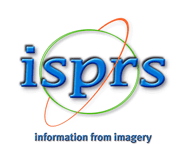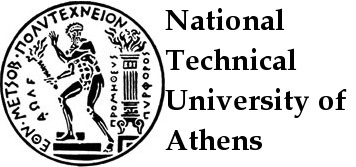Myran IFC model
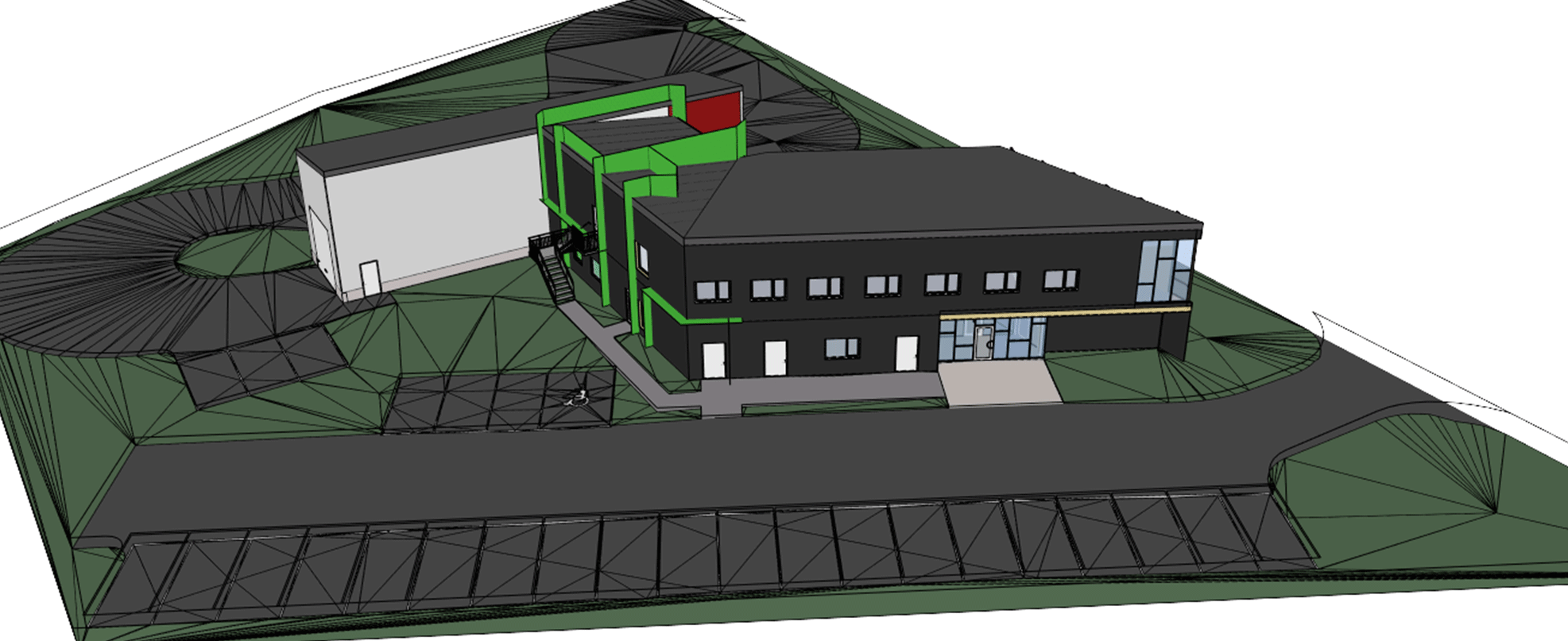
- Short description
- Technical details
- Georeferencing details
- Semantics details
- Elements groups: the 3 storeys
- Relationships
Short description
It is the IFC model of a 2-floor office building in Falun, Sweden.
It was provided for this study by MONDO arkitekter, Falun, Sweden.
The data represent the architectural model of the BIM.
It was exported on 25/10/2017 from the base software Autodesk Revit 2018 (ENU)
Technical details
Name of the file: Myran.ifc
Used IFC version: 2x3 (MVD: CoordinationView v.2.0)
Georeferencing details
Original georeferencing details (for Task 1)
Coordinate reference system: none
Coordinates of the reference point (blue in Figure 1):
E: 152677.777 m
N: 6555555.555 m
H: 148.2 m
Rotation to the true North of the reference direction (blue in Figure 2): 32.3°.
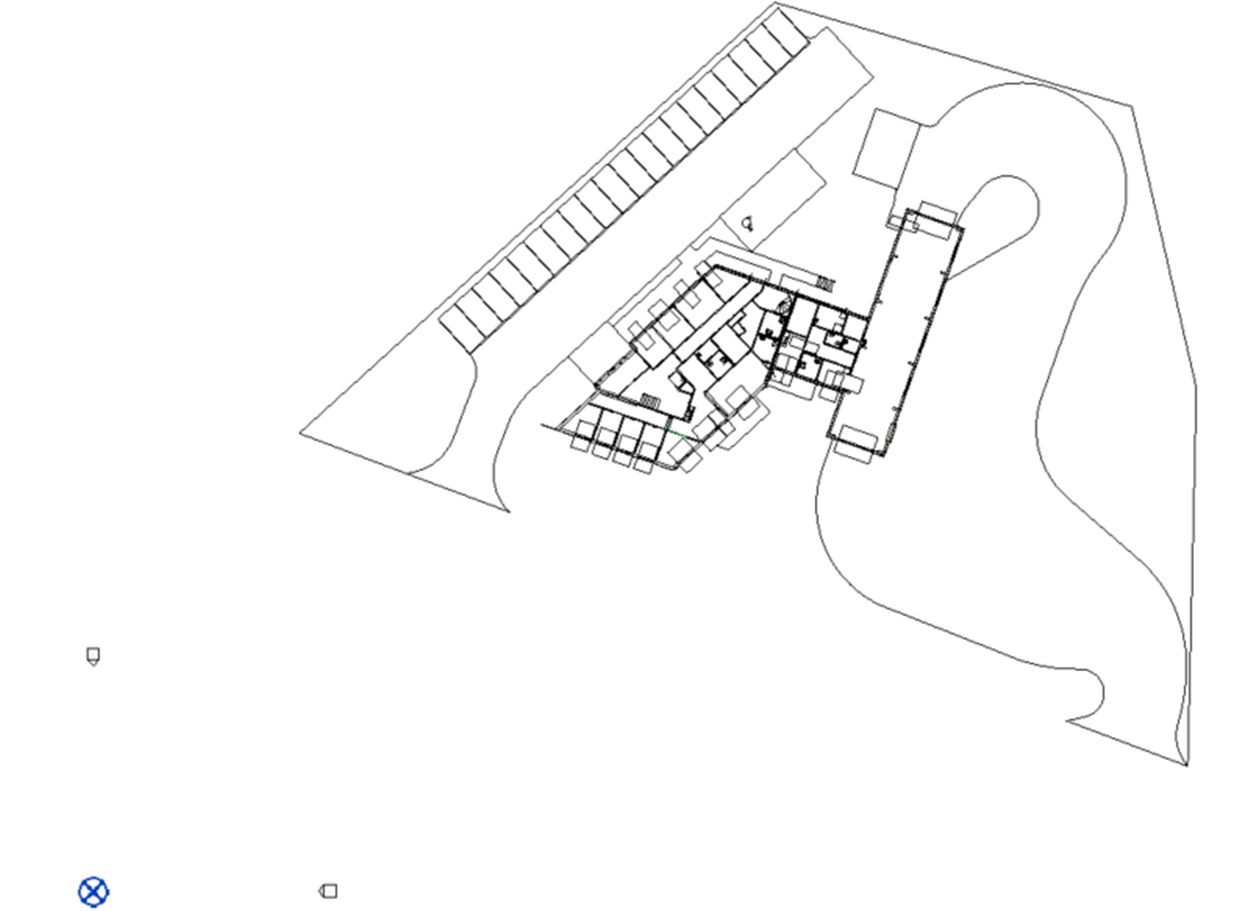
Georeferencing parameters (for Task 2)
Coordinate reference system: EPSG::3013 SWEREF 99 15 45, RH2000
Coordinates of the reference point (blue in Figure 1):
E: 145312.8320 m
N: 6721748.645 m
H: 340.5 m
Rotation to the true North of the reference direction (blue in Figure 2): 48°.
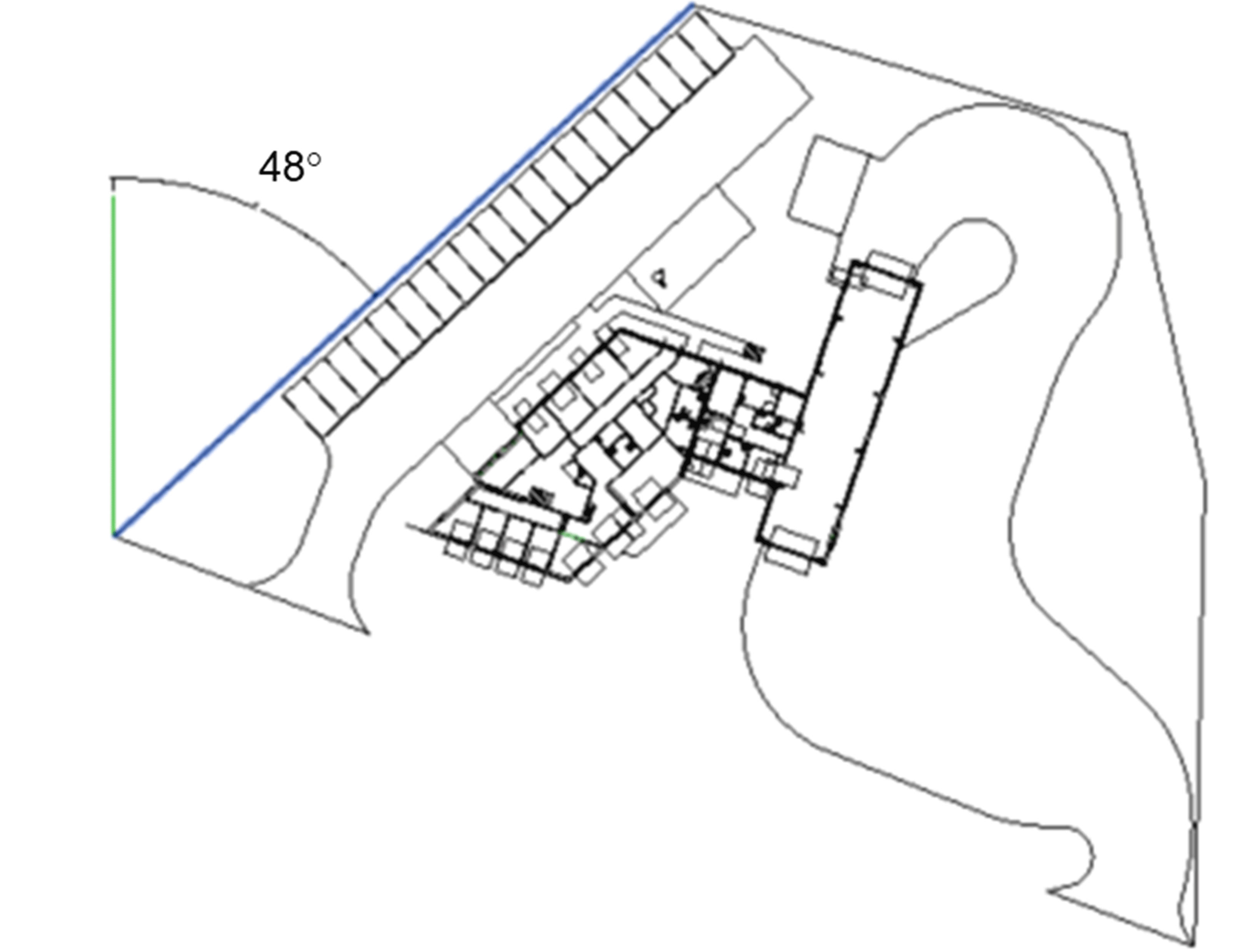
Units of measure and dimensions
The used unit of measure in the model is millimetre.
In the following Figures 3-4 some dimensions are shown, to be considered for Task 1
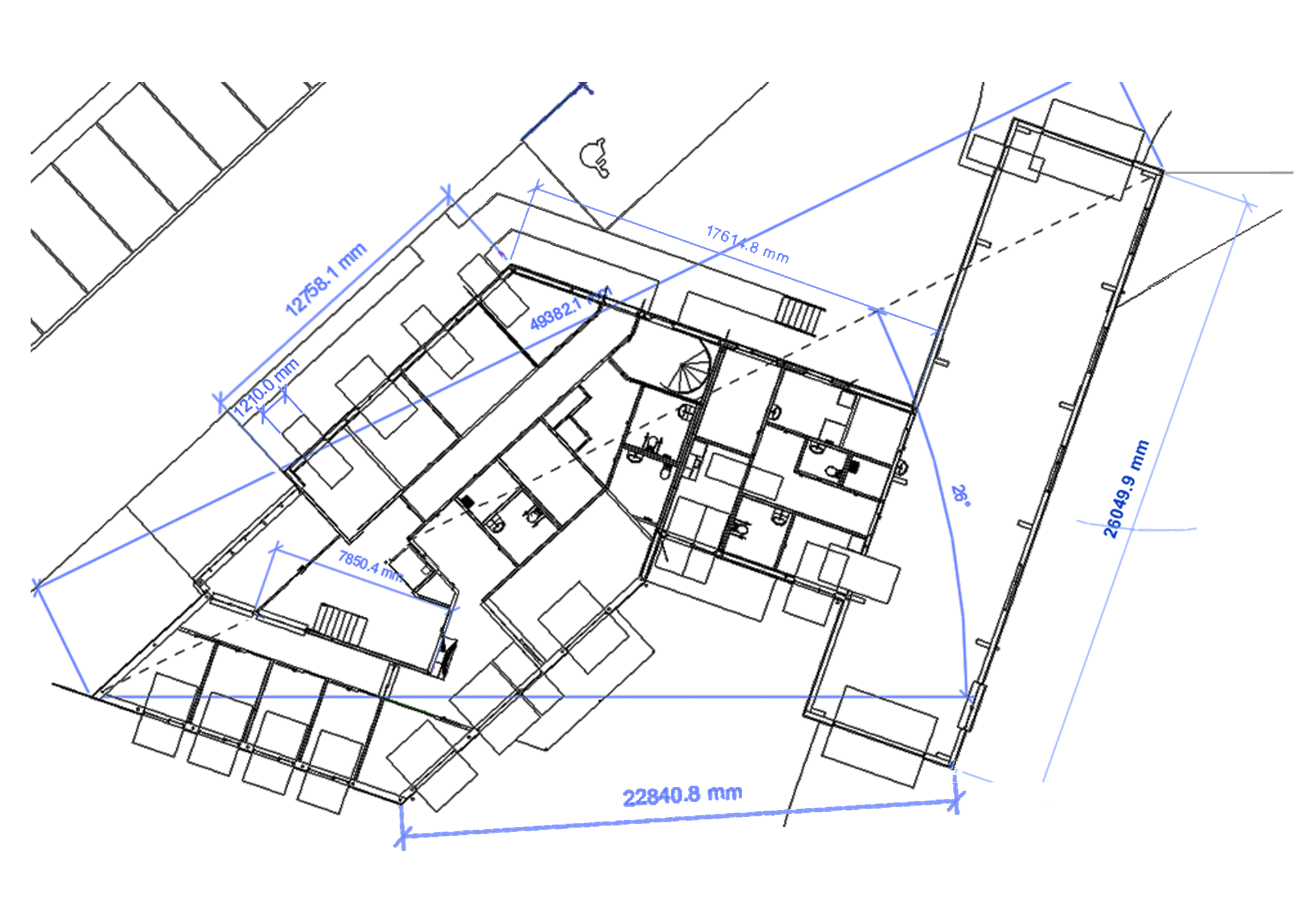
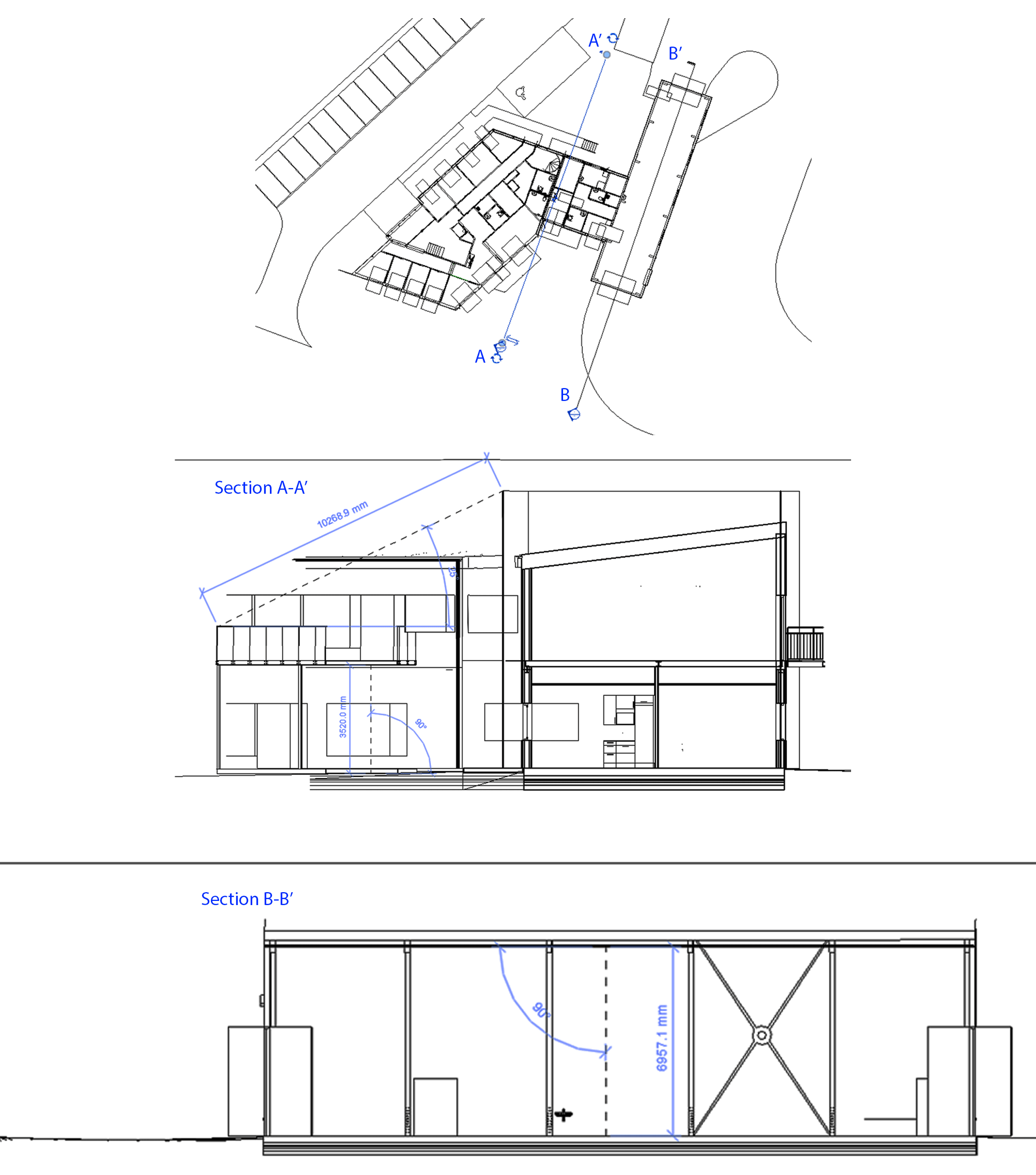
Semantics details
Here, the entities included in the model (following ‘inclusion’ hierarchy) are listed:
IfcProject
-
IfcSite
-
IfcBuilding
-
IfcBuildingStorey
-
IfcWall
-
IfcWallStandardCase
-
IfcCurtainWall
-
IfcColumn
-
IfcSlab
-
IfcPlate
-
IfcBeam
-
IfcStair
-
IfcStairFlight
-
IfcRoof
-
IfcCovering
-
IfcOpeningElement
-
IfcDoor
-
IfcWindow
-
IfcRailing
-
IfcFlowTerminal
-
IfcFlowSegment
-
IfcFurnishingElement
-
IfcMember
-
IfcBuildingElementProxy
-
-
-
Note: Semantics are usually consistently assigned and many attributes are filled.
You can browse the full list of IFC entities, with related descriptions, definitions and foreseen attributes in the buildingSMART website.
For checking the semantics of the model, we propose here some elements in a higher detail.
Anyway, we suggest to have an overall look at the model and its elements, and report on them all, including the more general entities IfcSite and IfcBuilding and IfcBuildingStoreys, even if, in this case, they contain very few attributes (namely, only the attribute ‘NumberOfStoreys = 3’ is added to IfcBuilding, and ‘AboveGround = .U.’ to IfcBuildingStoreys).
9 Elements
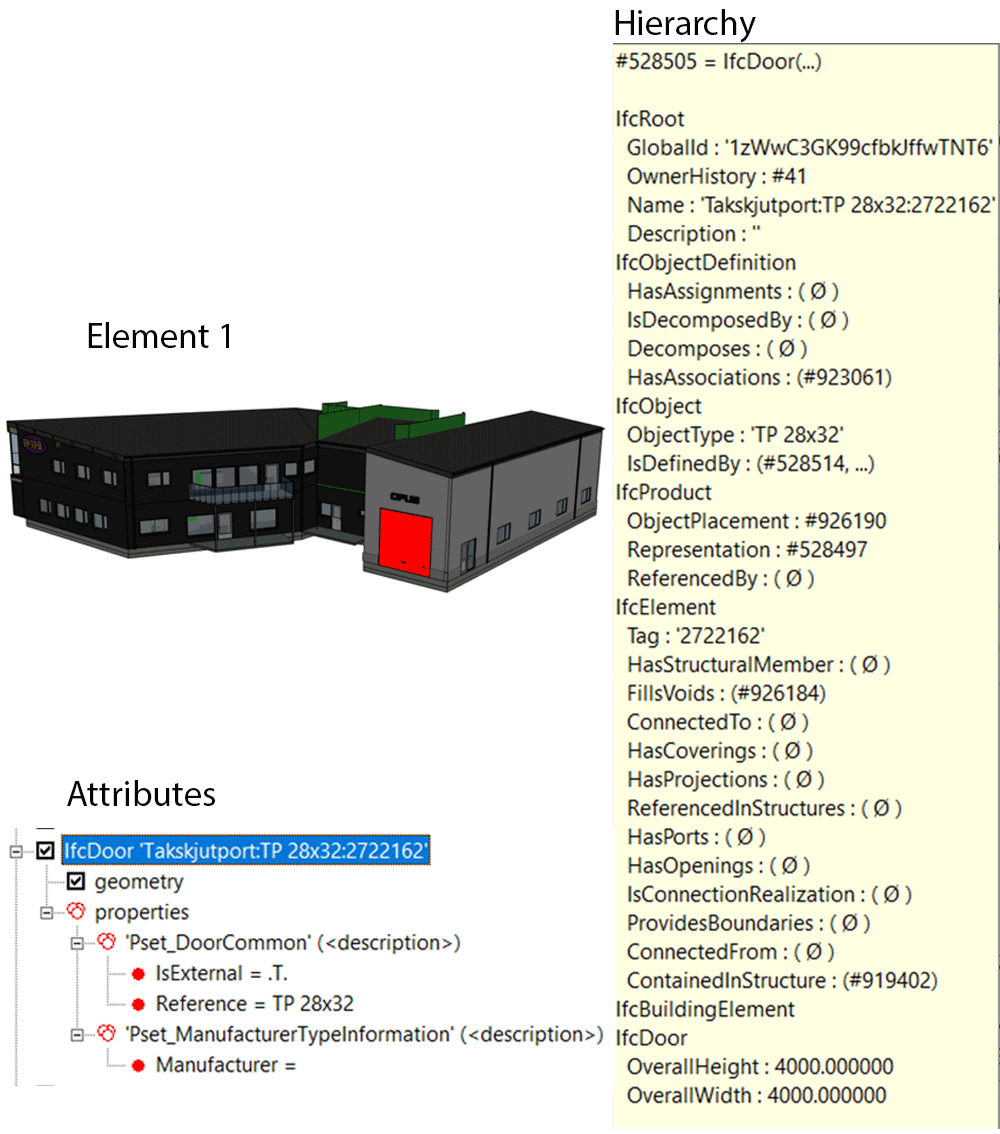
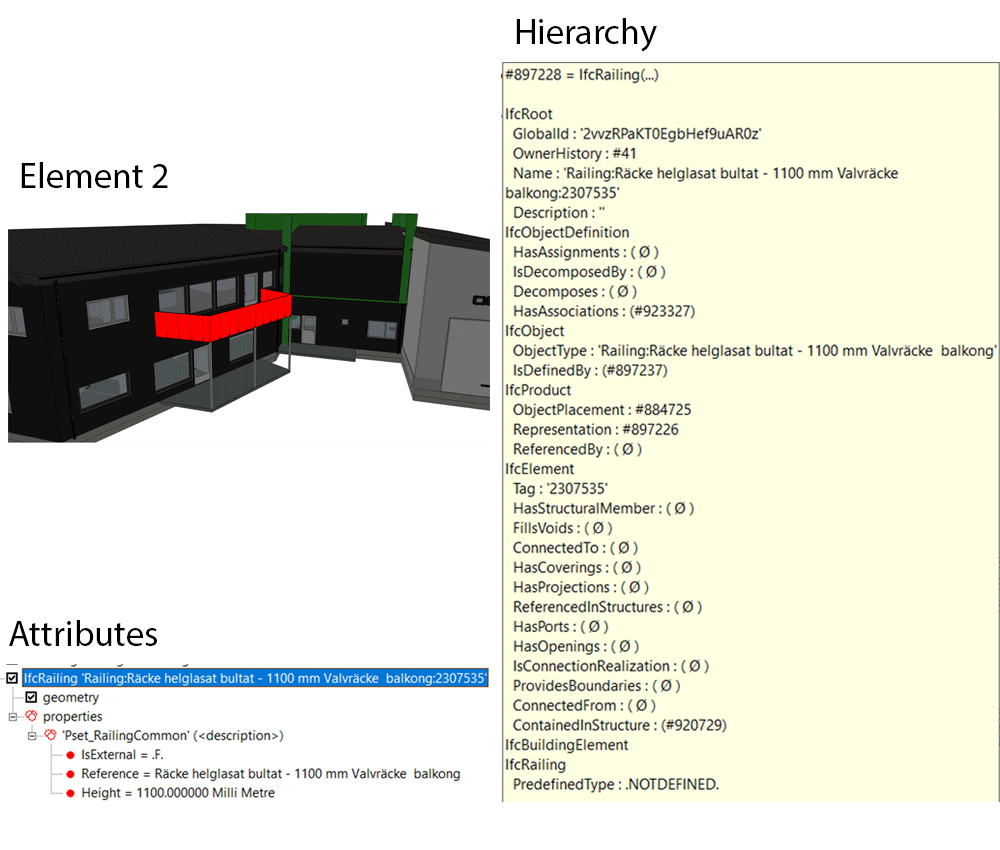
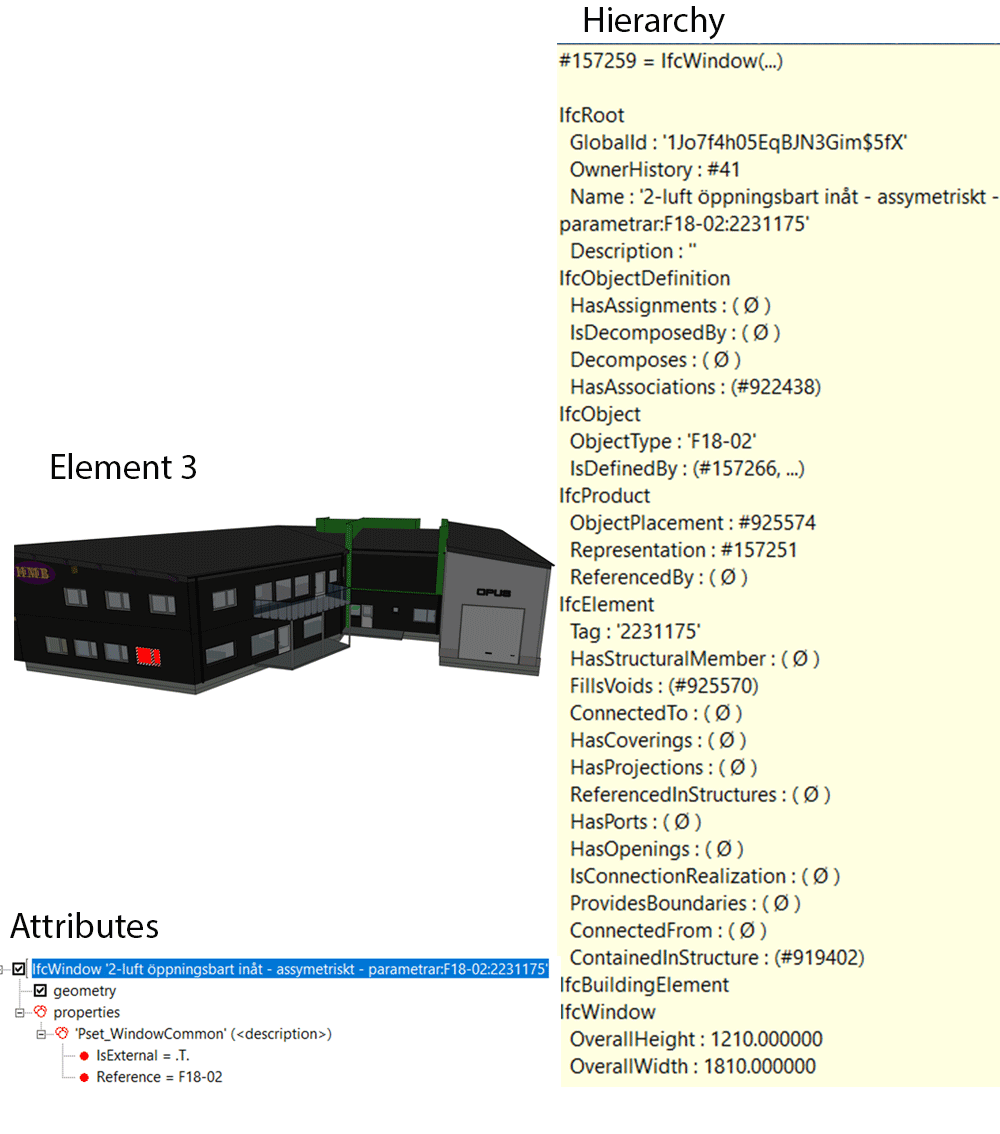
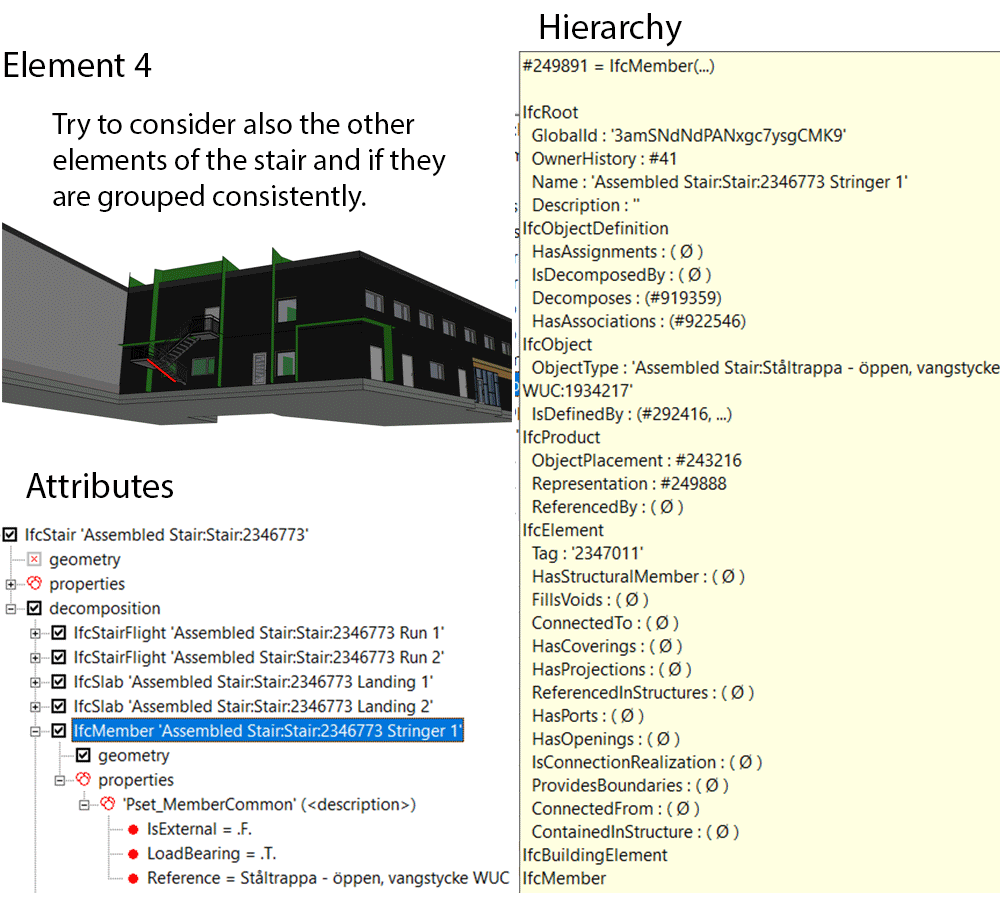
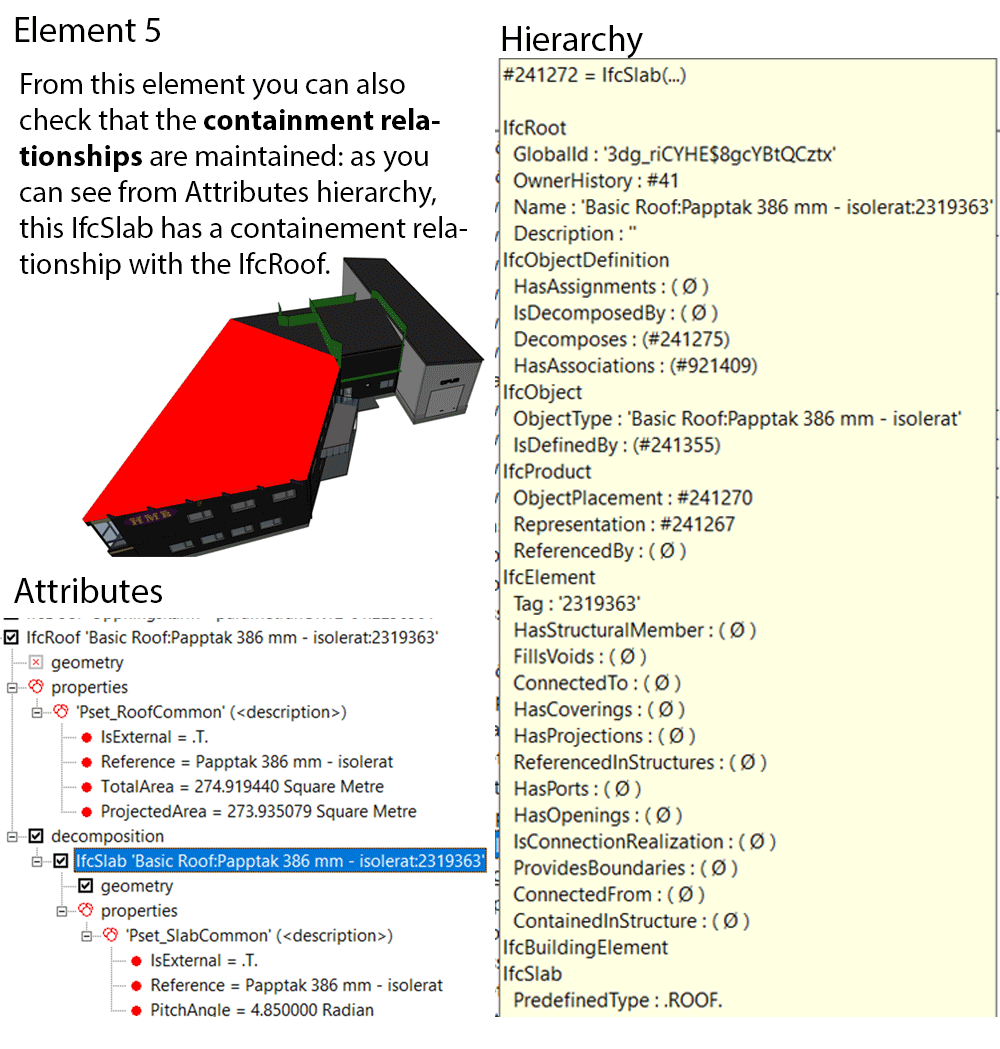
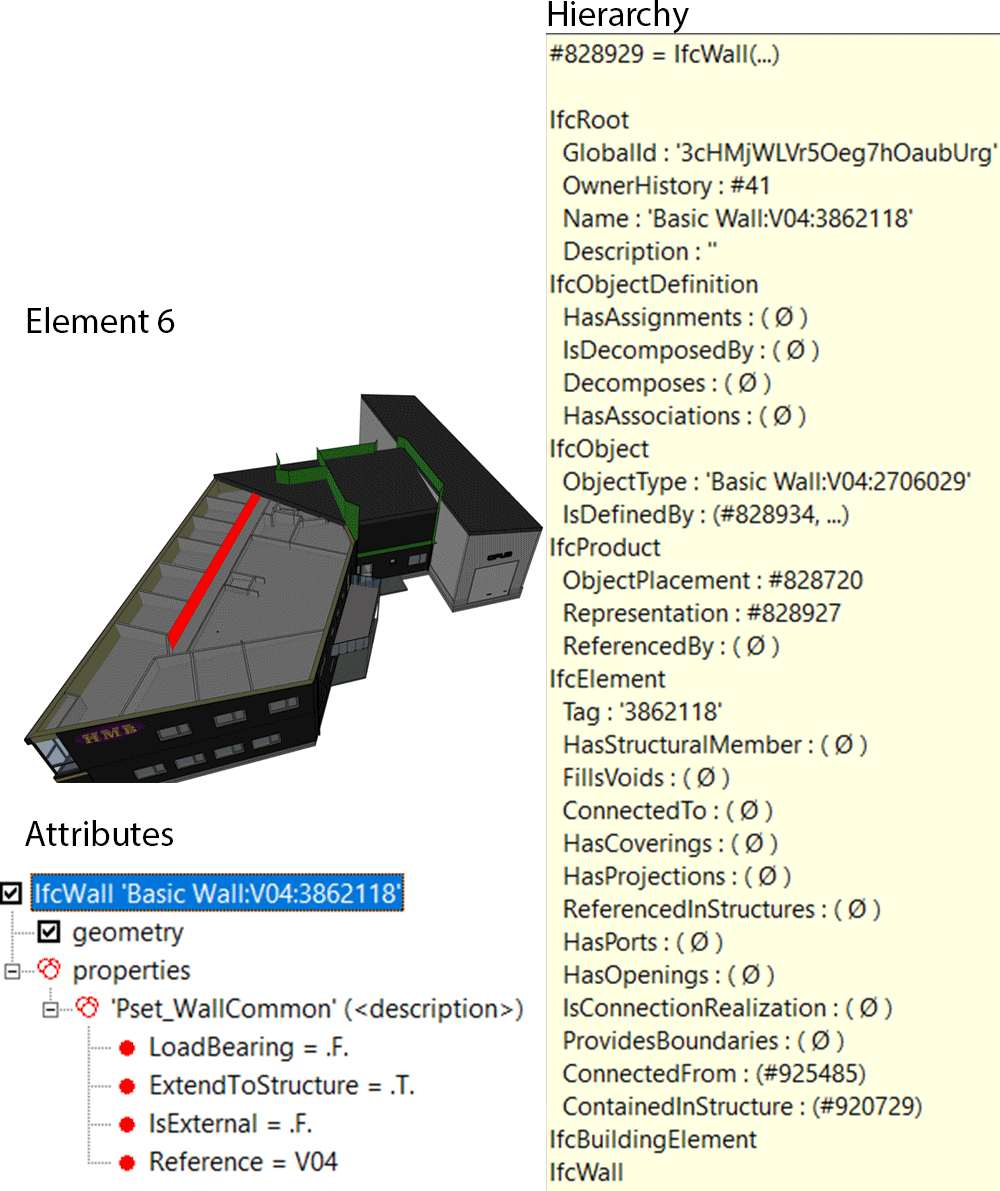
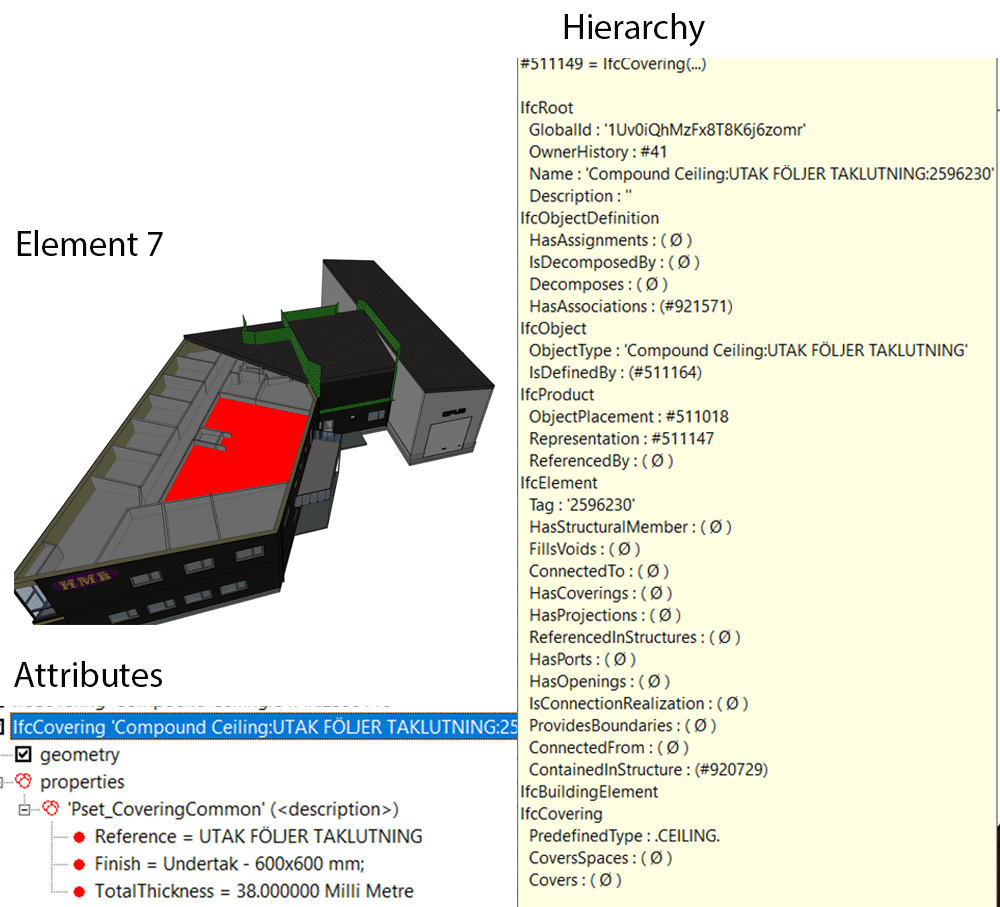
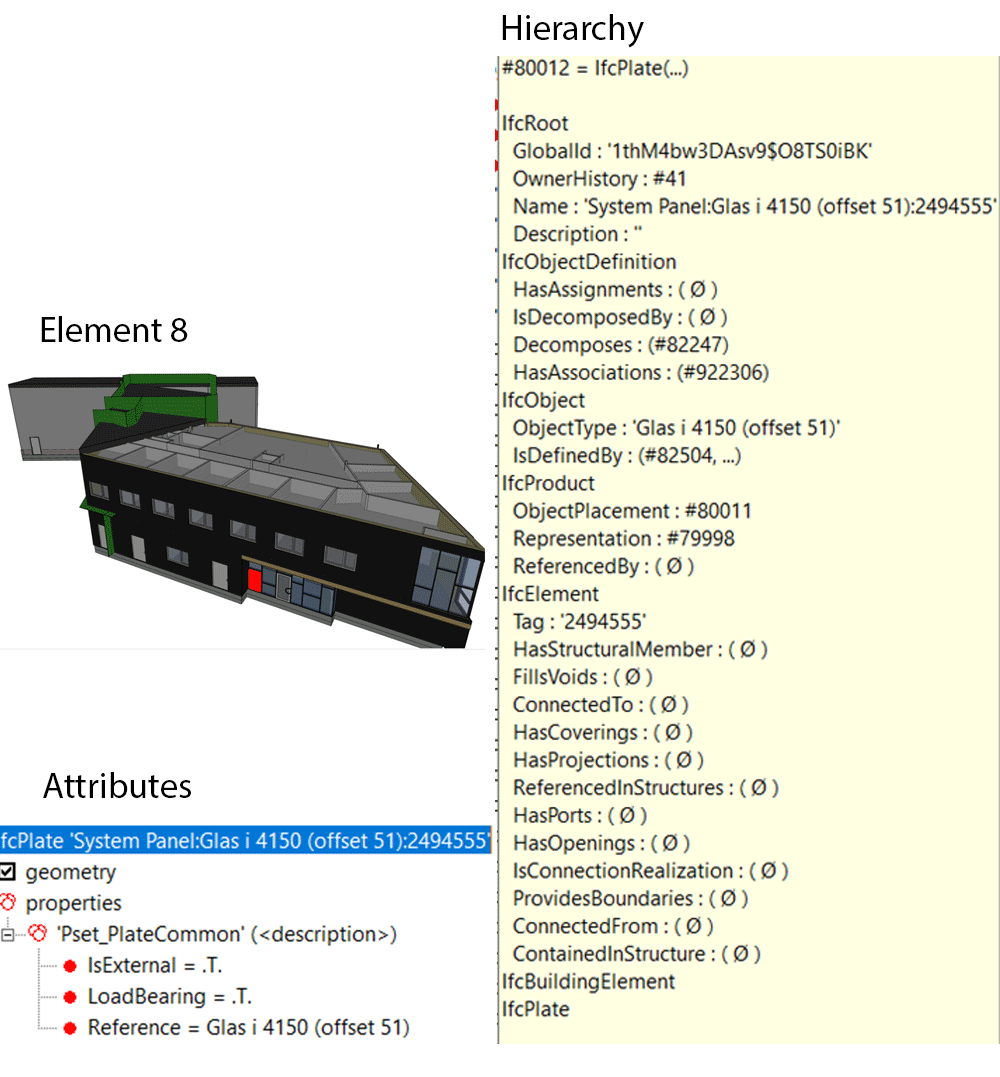
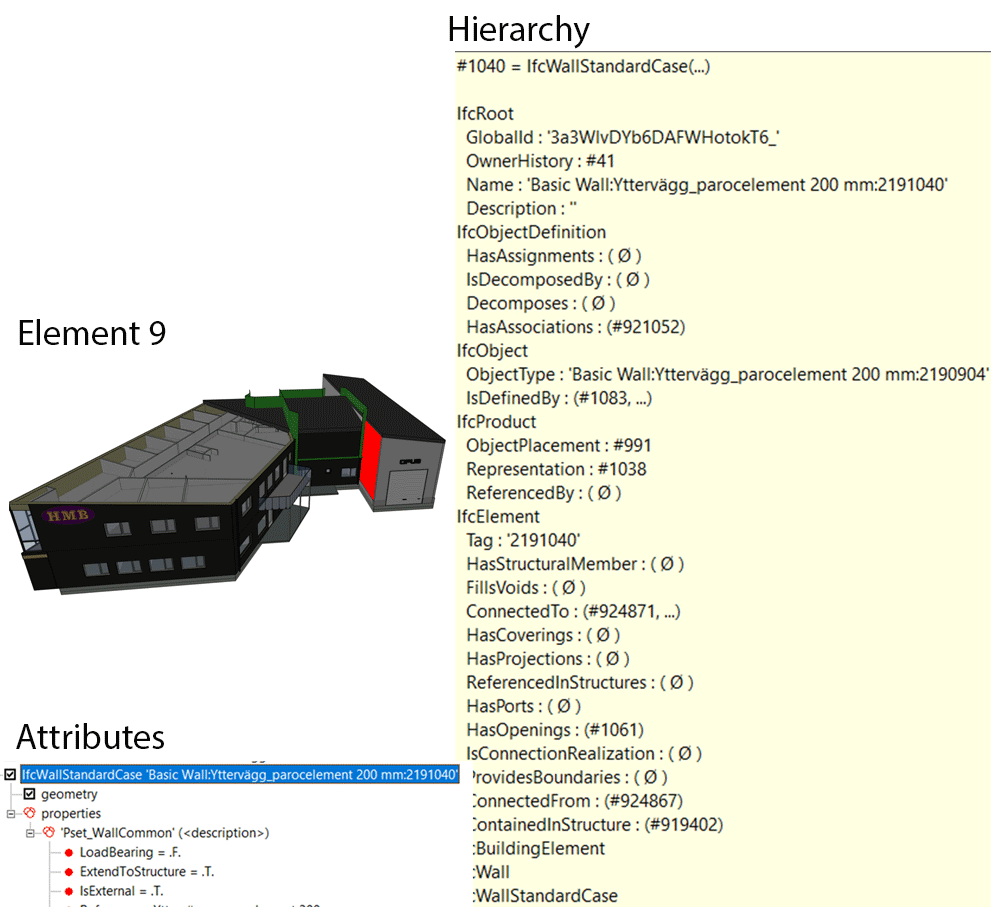
Elements groups: the 3 storeys
For the Task 1, you should also check that the objects are grouped in the same building storeys.
The grouping of the model is not completely consistent with the definition:
-
storey 1 includes the ground floor, some structures rising for the whole building heights and the roof;
-
storey 2 includes the first floor of the building, without roof, and the roof of the close building 2-storeys height;
-
storey 3 only includes the roof structure. However, we will evaluate the consistency of the model with itself).
However, we won’t judge this, only checking that it remains consistent with itself once imported. In the following Figures, we add several images of the single storeys so that you can check visually that no changes have happen, as far as you can. We will eventually go in further detail during the final benchmark analysis using the models delivered by you.
Building storey 1
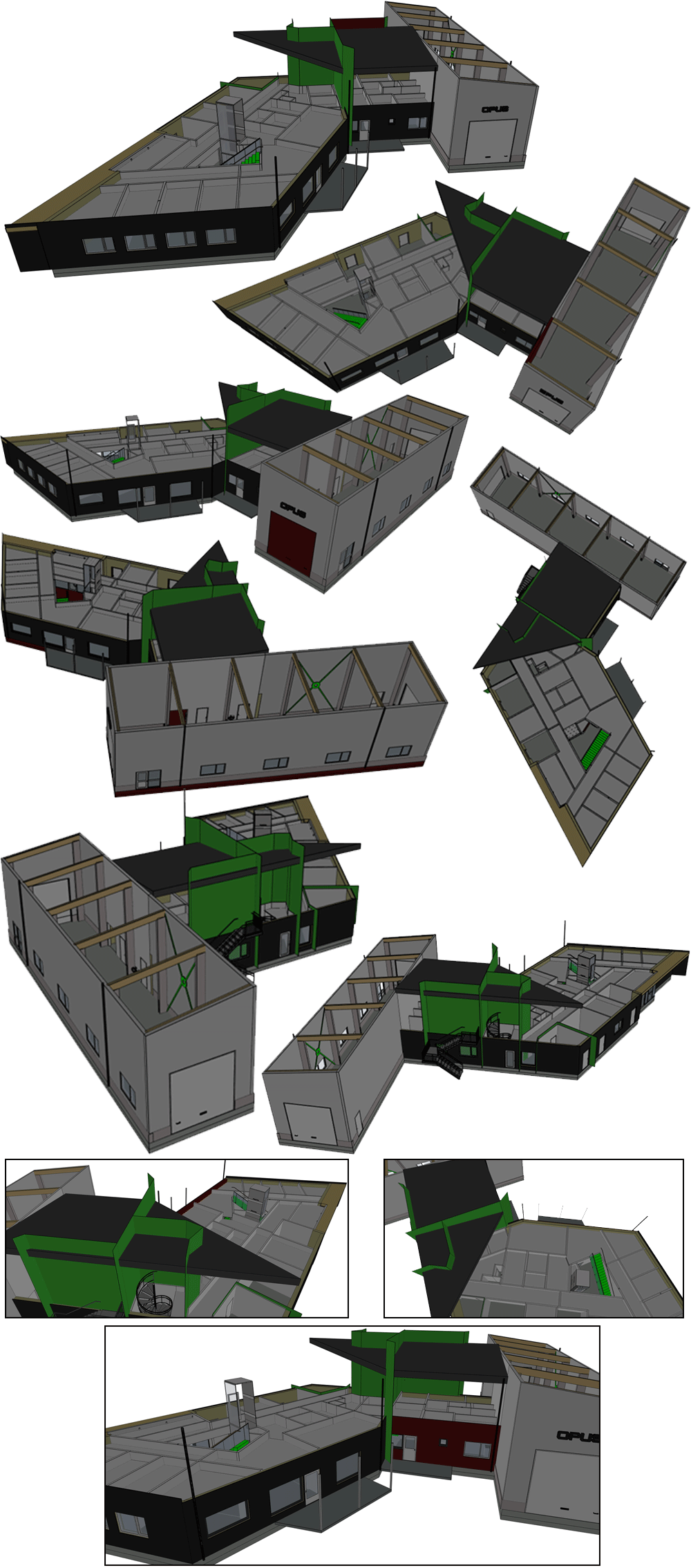
Building storey 2
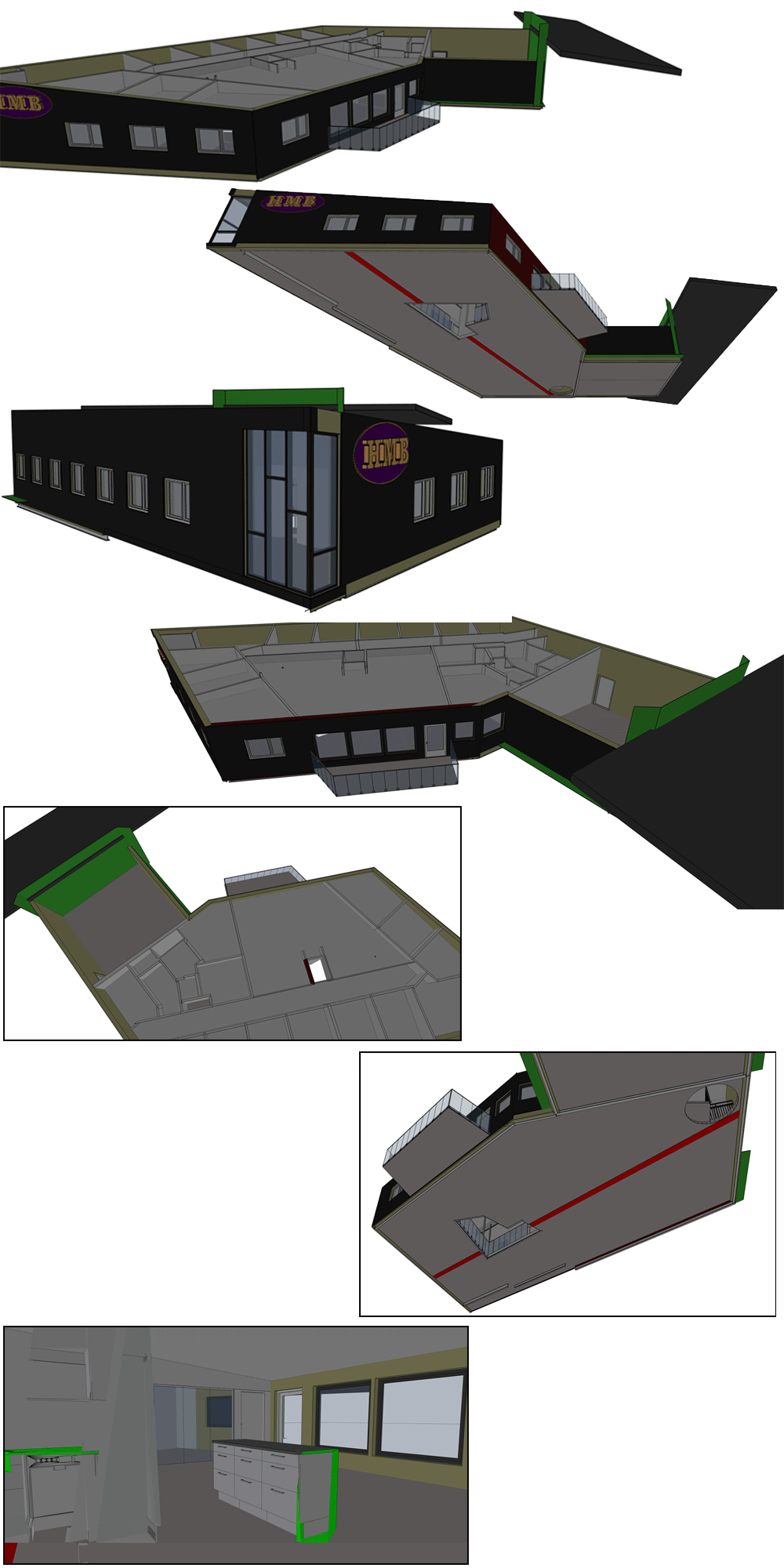
Building storey 3
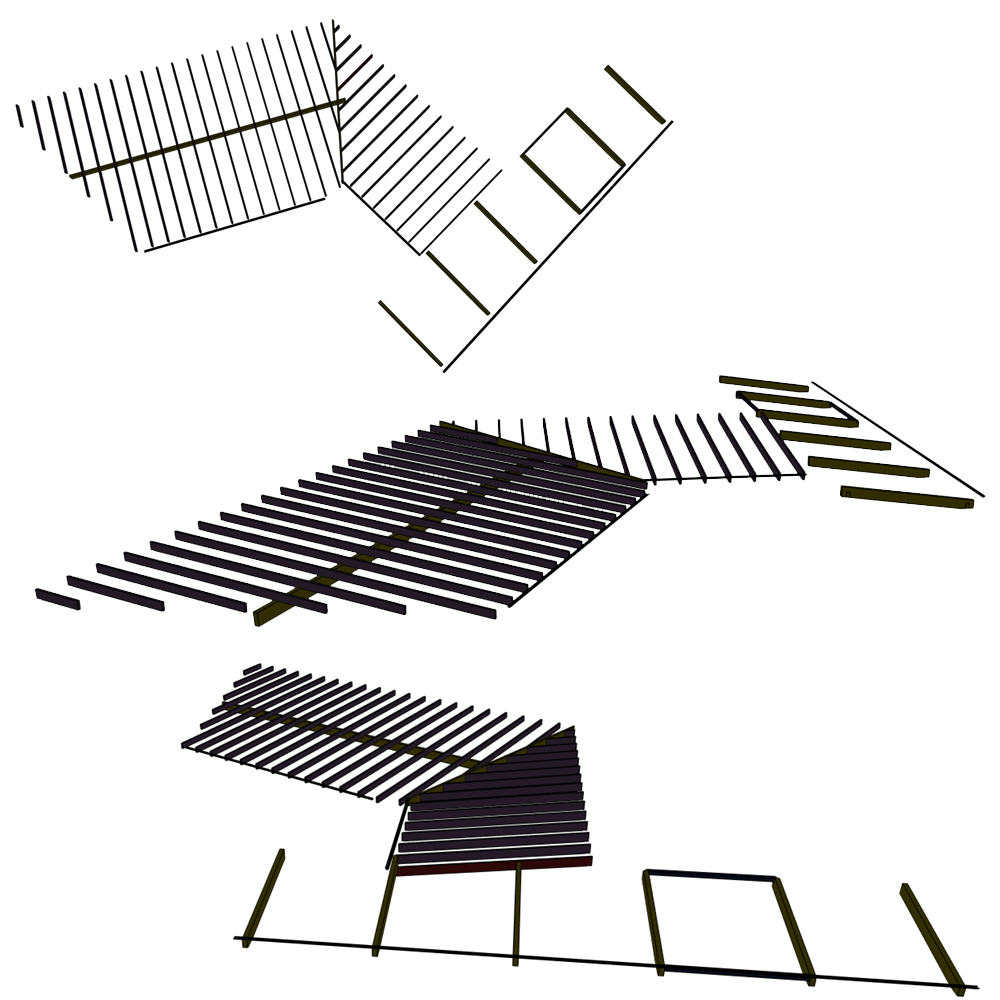
Relationships
In Task 1, you are also asked to check other relationships. Some examples, in the Myran.ifc model are:
IfcRelAssociatesMaterial, connecting the objects (e.g. IfCWallType or IfCWallStandardCase) to their materials (e.g. IfcMaterialLayerSet, IfcMaterialLayerSetUsage).
IfcRelAggregates, between one object to others (e.g. IfCurtainWall to IfcMember and IfcWallStandardCase; IfcRoof to IfcSlab; IfcStair to IfcRailing and IfcStairFlight and IfcMemebr, and so on).
IfcRelFillsElement, between IfcOpeningElement to IfcDoor or IfcWindow.
IfcRelContainedInSpatialStructure, between IfcBeam and IfcFlowSegment (and many more) to IfcBuildingStorey.
Important dates and next steps
March 2019
- Complete materials available
- Start of declaration of interest from participants
July 8th, 2019
- GeoBIM benchmark meeting with participants and proponents
October 31st, 2019
- Deadline for data processing and benchmark answer submission
December 2nd-3rd, 2019
